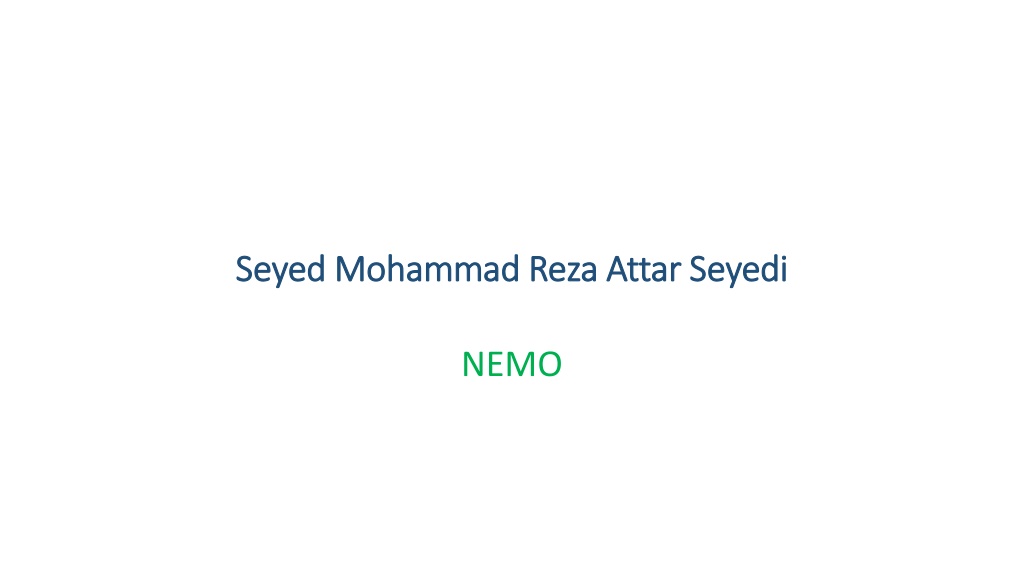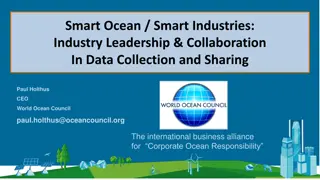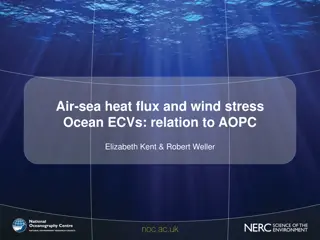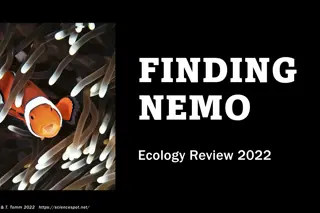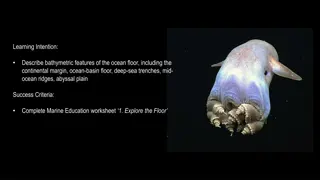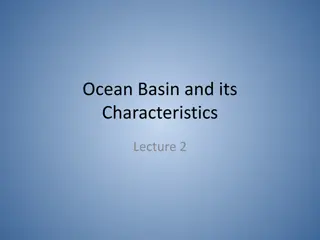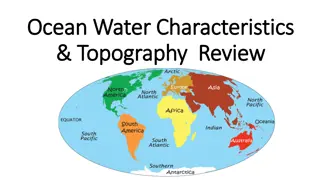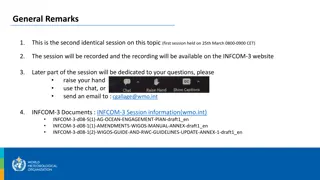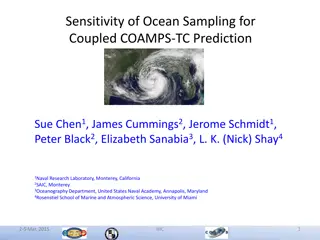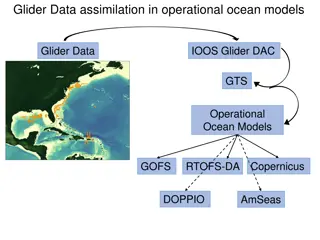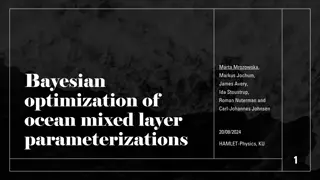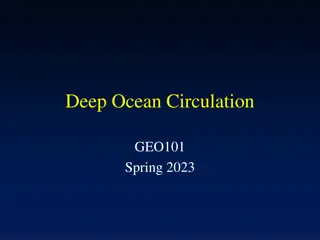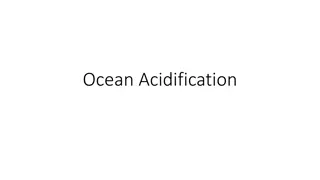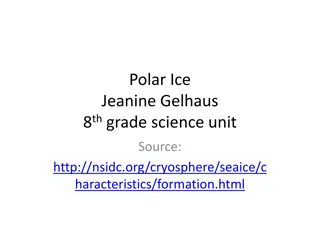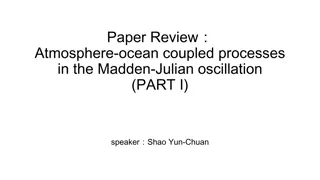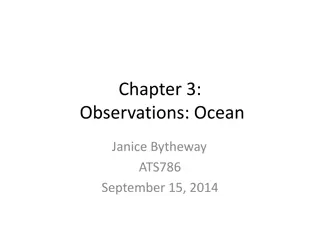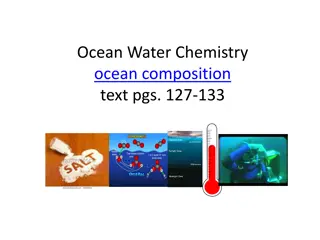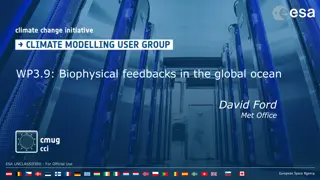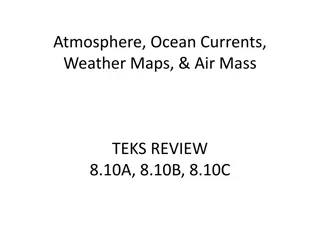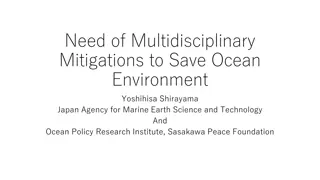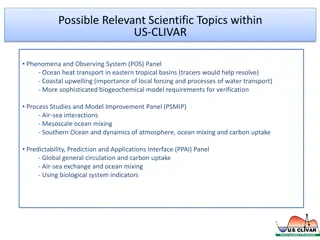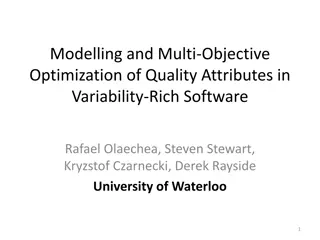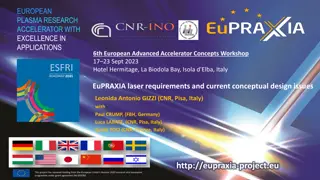Understanding NEMO: European Ocean Modeling Software
NEMO (Nucleus for European Modeling of the Ocean) is a comprehensive software used for numerical simulation of the ocean. Its components include the blue ocean (NEMO-OPA) for dynamics, white ocean (NEMO-LIM) for sea-ice simulation, and green ocean (NEMO-TOP) for biogeochemistry. NEMO produces model outputs like temperature, salinity, velocities, and more, aiding in comparing with real data and forecasting ocean conditions. Each component of NEMO focuses on different aspects of ocean modeling, from velocity fields to sea-ice mass balance and tracer transport. Key strengths include extensive data dissemination, validation, and high-resolution reanalysis.
Download Presentation

Please find below an Image/Link to download the presentation.
The content on the website is provided AS IS for your information and personal use only. It may not be sold, licensed, or shared on other websites without obtaining consent from the author. Download presentation by click this link. If you encounter any issues during the download, it is possible that the publisher has removed the file from their server.
E N D
Presentation Transcript
Seyed Mohammad Reza Attar Seyedi Seyed Mohammad Reza Attar Seyedi NEMO
Introduction Introduction NEMO (Nucleus for European Modeling of the Ocean) is a software for numerical simulation of the ocean. Its three main components are: the blue ocean(NEMO-OPA) which simulates the dynamics. the white ocean(NEMO-LIM)which simulates the sea-ice. the green ocean(NEMO-TOP) which simulates the biogeochemistry.
What does NEMO produces? What are the applications? What does NEMO produces? What are the applications? Running NEMO generates some model outputs: three-dimensional fields on the configuration s grid such as temperature, salinity, velocities, ice cover or plankton concentration, and their evolution in time. These outputs can be used to compare with real data (satellite measurements) These outputs can also be used as forecasts for the ocean
NEMO NEMO- -OPA OPA Prognostic variables are the three-dimensional velocity field, a linear or non- linear sea surface height, the temperature and the salinity.
NEMO NEMO- -LIM LIM To take the sea-ice into account, the mass balance of sea ice is the key diagnostic for climate simulations. The sea ice mass balance in a given region is determined, on the one hand, by ice growth and melt and by ice import in or export out of the region, on the other hand .Coverage, thickness and velocity are the main fields that NEMO-LIM aims at simulating.
NEMO NEMO- -TOP TOP The tracer transport model implemented in NEMO-TOP deals with passive tracers, which are carried by - but do not affect - ocean circulation. These contrast with active tracers such as temperature and salinity which feedbacks on ocean dynamics.
Key Strengths: Key Strengths: Data dissemination is provided for a very large number of ocean parameters An extensive validation has been conducted and is freely available, confirming the good quality of the dataset The reanalysis is performed at high resolution
Key Limitations: Key Limitations: Quality may be discontinuous and depend on observation coverage Uncertainty estimates are simply derived through verification skill scores Net surface heat flux seems underestimated at high latitudes
Conclusion Conclusion NEMO is widely used in the world and for a large variety of applications. It is also an always-improving platform. NEMO generates some model outputs. These outputs can also be used as forecasts for the ocean. These outputs can be used to compare with real data To know more on the NEMO project organization, you can read the NEMO organization paper, and to discover more on NEMO s features.
The End The End
